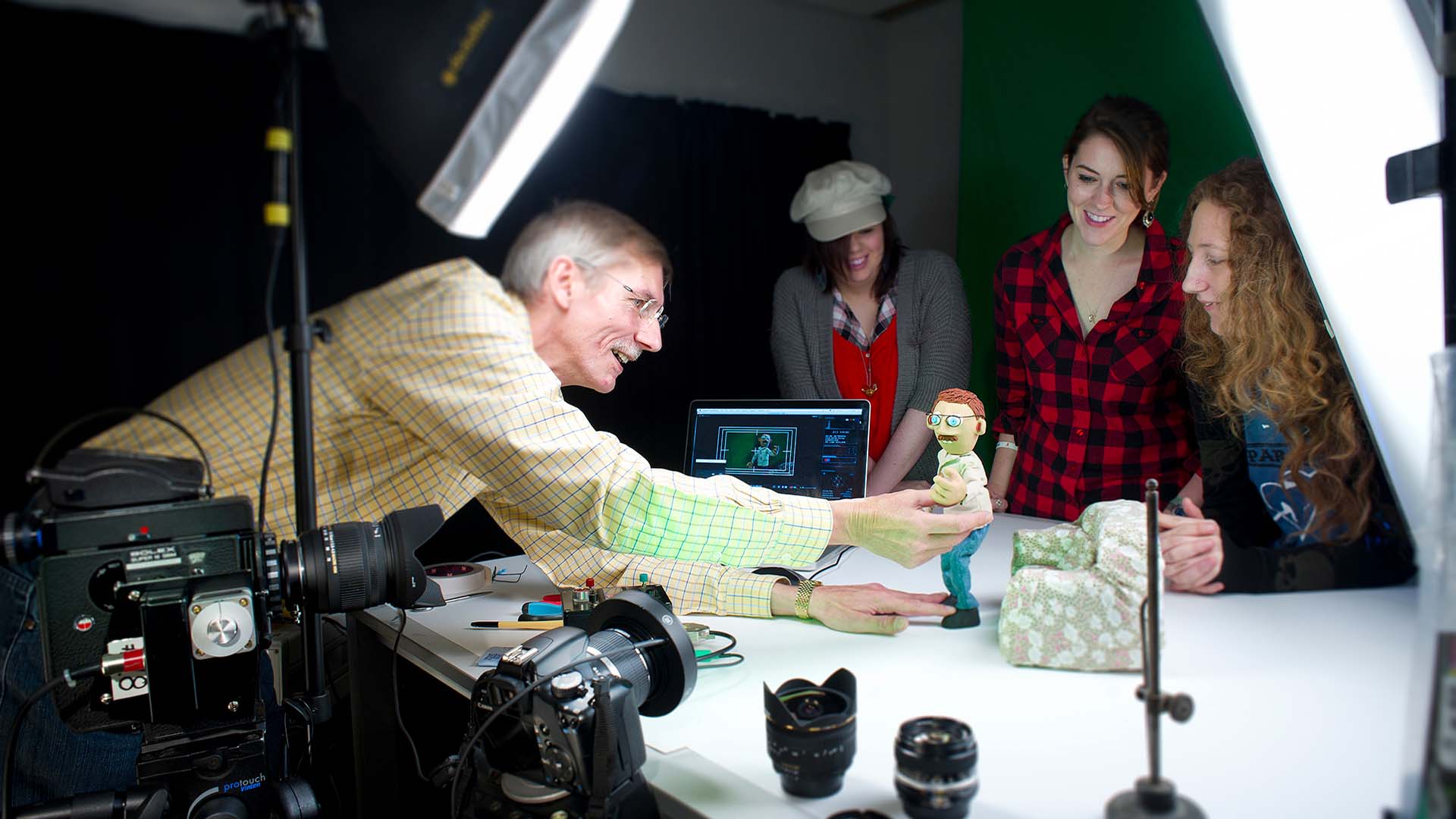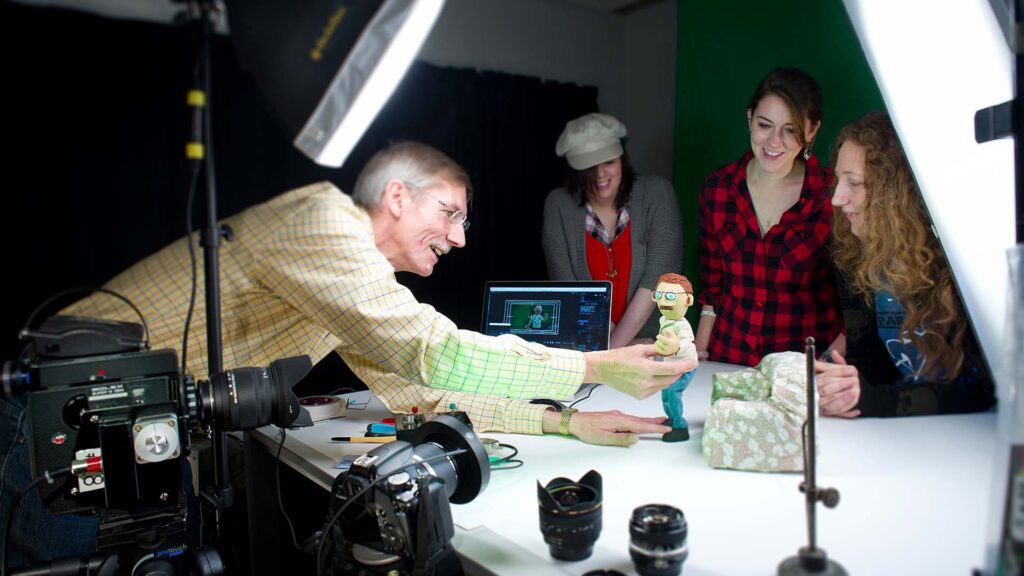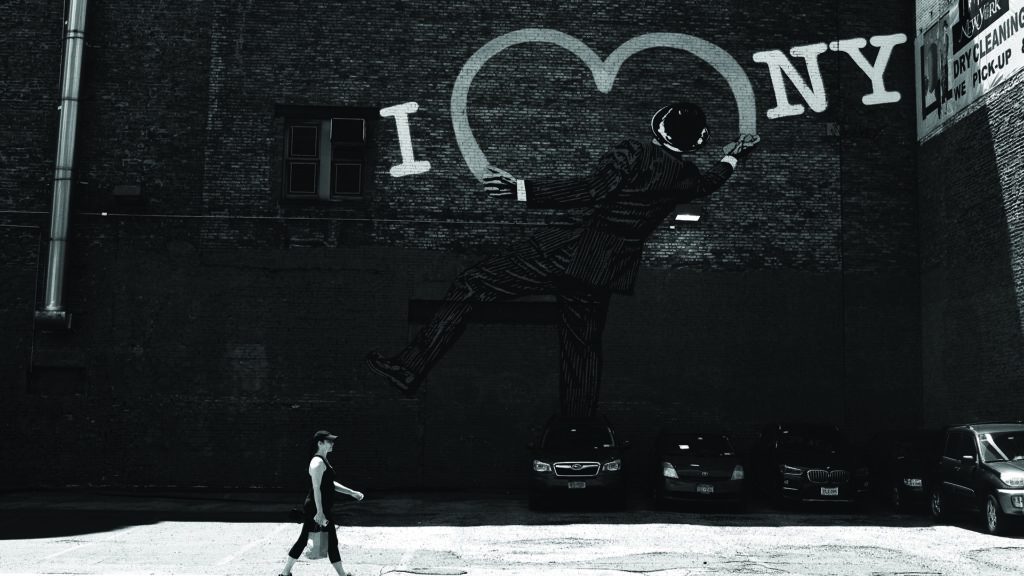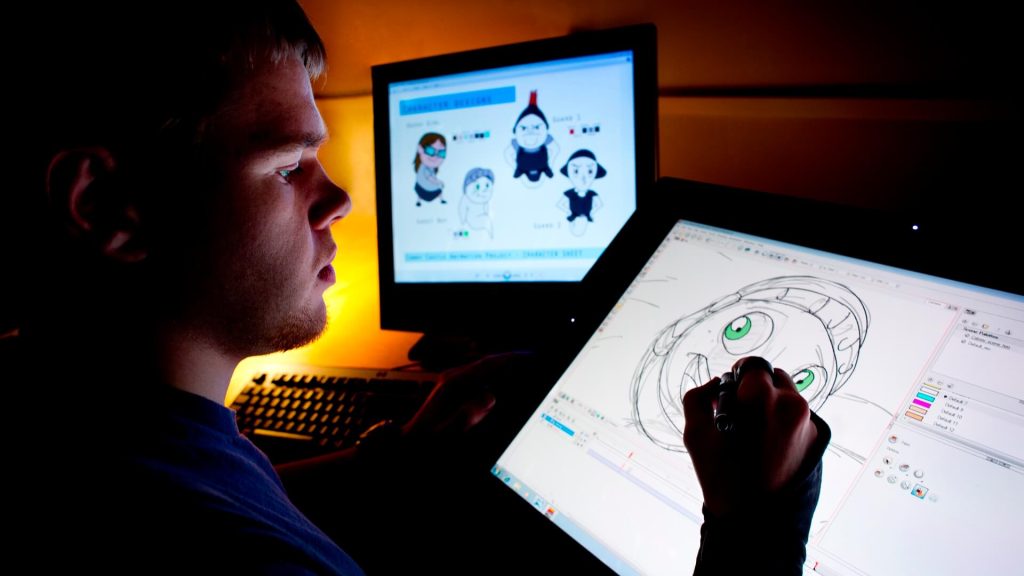
Just like you, our team of tutors found their path into the wonderful world of animation by a variety of routes and influences. We caught up with programme leader Alex Jukes, and senior lecturers Andrew Sugden and James Snazell, to draw a (somewhat wiggly) line from early inspirations to the present day.
What are your early memories of animation?

James (left): The memories are a mix up between Bagpuss, Ivor the Engine, Roobarb and Custard, The Magic Roundabout, Mr Benn, Captain Pugwash, The Clangers, Crystal Tipps and Alistair, Mr Men, Paddington, The Wombles, The Flumps, Ludwig. Then there’s all the Hanna Barbera stuff, such as Dastardly and Muttley and Wacky Races. But then I’d have to throw in The Yellow Submarine and, of course, things like The Jungle Book and other Disney films. I look at this list and I realise now why I’ve turned out the way I have.
Alex: Wacky Races. As a child I’d really enjoy the crazy, surreal antics and the fact that the personalities of the characters’ cars were so imaginatively put together, particularly Captain Caveman’s car. Also, can you get a better villainous duo than Dick Dastardly and his snickering sidekick Muttley? I have fond memories of Scooby-Doo, but they killed them when they introduced Scrappy-Doo.
Animation seems to cover a lot of ground, artistically – do you have any favourites?
Andrew (right): As a starting point for any aspiring animator I would recommend searching out Morph, an animated plasticine character in Vision On, another TV series of the 70s, made by the future founders of Aardman Animation Peter Lord and Dave Sproxton.
Alex: I enjoy strange or challenging animations which border on art/experimental. Ugly by Nikita Diakur is inspired. The David Shrigley animations are also weirdly brilliant.
James: I’ve been to the Ann Arbor Film Festival many times. It often has special screening programmes. These are such special, significant events, with many films that you don’t often see, and often on rarely seen formats. They had a programme of early computer animation, including the work of the Whitney Brothers and Stan Vanderbeek, and also an amazing programme of West Coast psychedelic films all on the original formats, from 16mm to early digital formats such as Digitalbeta. A couple of years back they screened animation work by Japanese animator Atsushi Wada which was hilarious. It was great to be part of a cinema screening where everyone was laughing out loud.
Alex: The latest Virtual Reality animations are incredible and can evoke emotions through being part of the experience. Also, there are a number of intensely hard-hitting animated documentaries such as Waltz with Bashir, directed by Ari Folman (2008).

Alex, you’ve described your first shot at animation, a running lion, as ‘dreadful’, but why did you want to try?

Alex: I remember seeing [author, scriptwriter, director, cartoonist, and animator of Channel 4 tv series Pond Life] Candy Guard’s final year show in the 1980s. She was in the same year as my sister and I went along to the show. I was amazed. My first step to producing animation was during my fine art degree. I was working on a group film project and we wanted to add some animation. To help us get to grips with what animation was all about we went on a weird animation workshop run by the Forkbeard Fantasy (forkbeardfantasy.co.uk). Insane but addictive.
As animators, whose work do you always come back to?
Andrew: Many would list films by Disney, but I prefer the work of his competitor Max Fleischer’s studios, as it’s more varied, and pioneered mixed media animation and music (of the pop promo type) animations. It also embraced different ethnicities in the white-dominated media of the time.
James: I always return to the ideas and concepts behind Stan Brakhage’s Mothlight. He’s most influenced my way of thinking and, thereby, my style. He defies being pigeon-holed. He gets defined as an animator, a filmmaker, an artist filmmaker, a documentary filmmaker, a filmmaker of the fantastical. He’s all of these, and yet none, as you can’t say he’s distinctly one thing or the other.
Alex: American experimental filmmaker Ernie Gehr and Robert Breer, who was also a painter, and sculptor. But this isn’t really animation.

The world of animation seems to be in constant flux, but what changed your ideas of the possibilities of animation?

James: My game-changer comes in two parts. The first Tron movie as the intro, and then Toy Story as the main event. Both revolutionised the industry from top to bottom. There was film and animation before these films – and then there was film and animation after. And ‘after’ meant never going back.
Andrew: For me Creature Comforts by Aardman Animation, a series for Channel 4. It changed the way people looked at stop-motion animation, and the fortunes of their company, and paved the way for the UK to become a world leader in both TV and feature film stop-motion production.
Alex: The External World by David O’Reilly. This turned a lot of things on their head in terms of animation.
But ultimately, animation is for kids, isn’t it?
Andrew: We’re all just big kids really, but animation has its place in serious communication and messages in that it can tackle symbolically many subjects that are more difficult with live action. I’m a great believer in animation as an all-round communication medium: entertainer, persuader, educator, informer, and in many cases, all of these at the same time.
Alex agrees, but puts it more succinctly:
Alex: Animation is for everyone.

Find out more about studying animation at Edge Hill University
April 16, 2025


